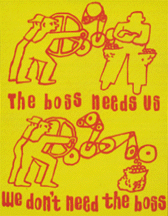Mr. Gaudet said the collapse of the auto industry remains inevitable despite this latest surge of public cash. "There is no evidence in the past that corporate welfare works," he said. This bailout will only lead other financially struggling companies and industries in this tough economic time to also expect a government shell-out, Mr. Gaudet warned. "The government can't bail them all out," he said. "It's hard to justify to a laid-off Nortel worker why his or her tax dollars should go to support artificially inflated salaries in the auto industry."
Which Nortel workers are those? The ones left working in China?
My goodness but this is funny to hear the CTF speak on behalf of workers. This political lobby of business types, who are not taxpayers, whose association does not speak for workers but a small self interested right wing business lobby, whose association is not democratic and has no elected officials simply employed self appointed spokesmen.
But as the article goes on to point out actually the last time Chrysler was bailed out they paid back their debt. However it seems ominous that this apologist for the capitalist class is telling us the Big 3 are doomed. Of course as usual they blame workers salaries and production costs for being uncompetitive. However as usual they never let the facts get in the way of their rhetoric. In Canada the wages and benefits paid to Toyota workers who are not unionized are competitive with CAW wages and benefits. Not less but competitive. Yet no one is telling Toyota workers to take a wage cut.
And like the Big 3 Toyota is cutting back on production as well. The crisis of overproduction has hit automakers around the globe, thanks of course to globalization.
We are facing a two fold crisis in capitalism, the fiancial market meltdown and the crisis of overproduction and underconsumption. Nothing new in that it is just the same old same old as Marx pointed out 150 years ago.
SEE
There Is An Alternative To Capitalism
tagsMGuinty, GM, concesssion bargaining, unions, trade union, Marx, Ontario, Corporate Welfare, Canada, cars, automobilie, production, taxes, tax credit, investment, environment, hybrid, self-valorization,, self-management,, workers control,, autoworkers,, KEN LEWENZA,,CAW, Big Three Auto,, libertarian socialism, automobile, Chrysler, Tony Clement, business unions, auto parts, workers, layoffs, plant-closings, workers-control, unions, labour, Canada


